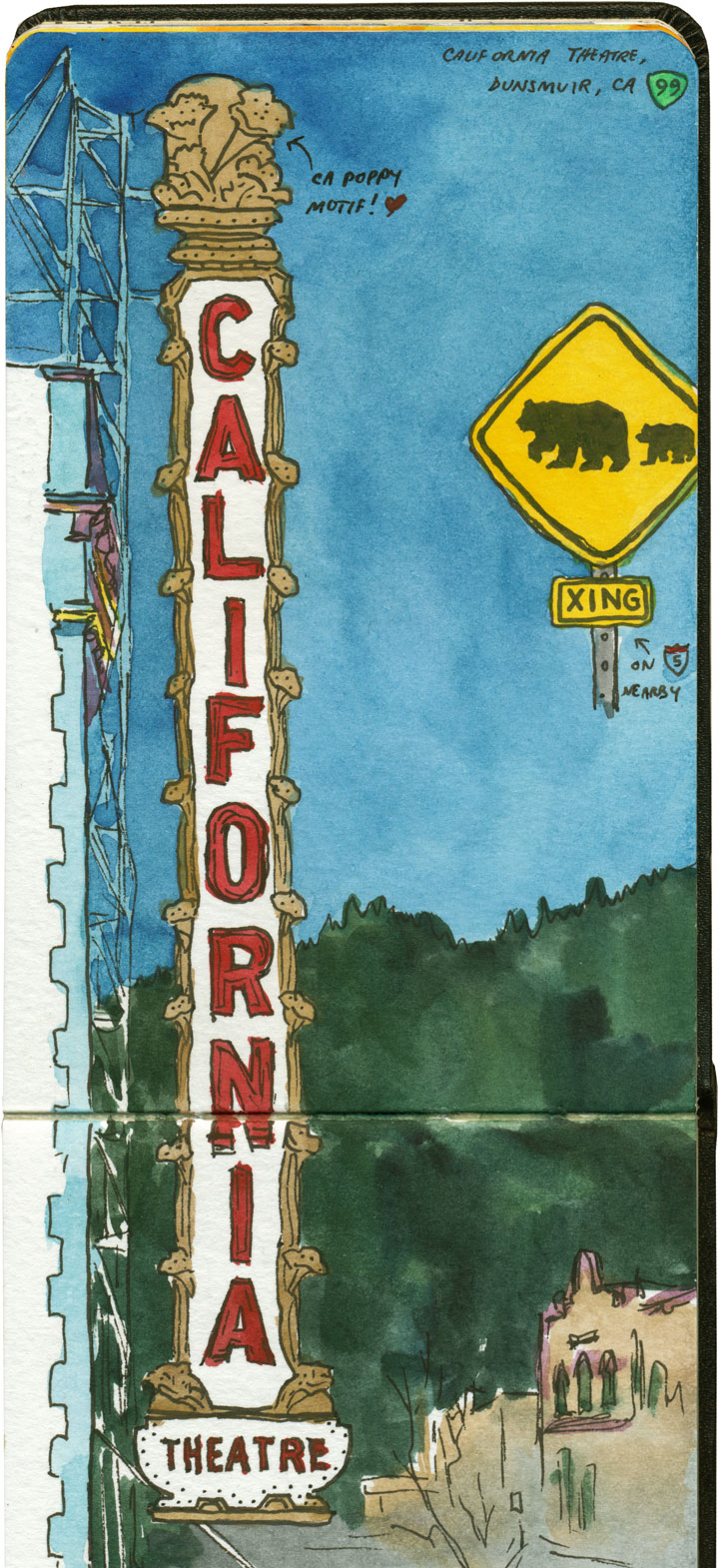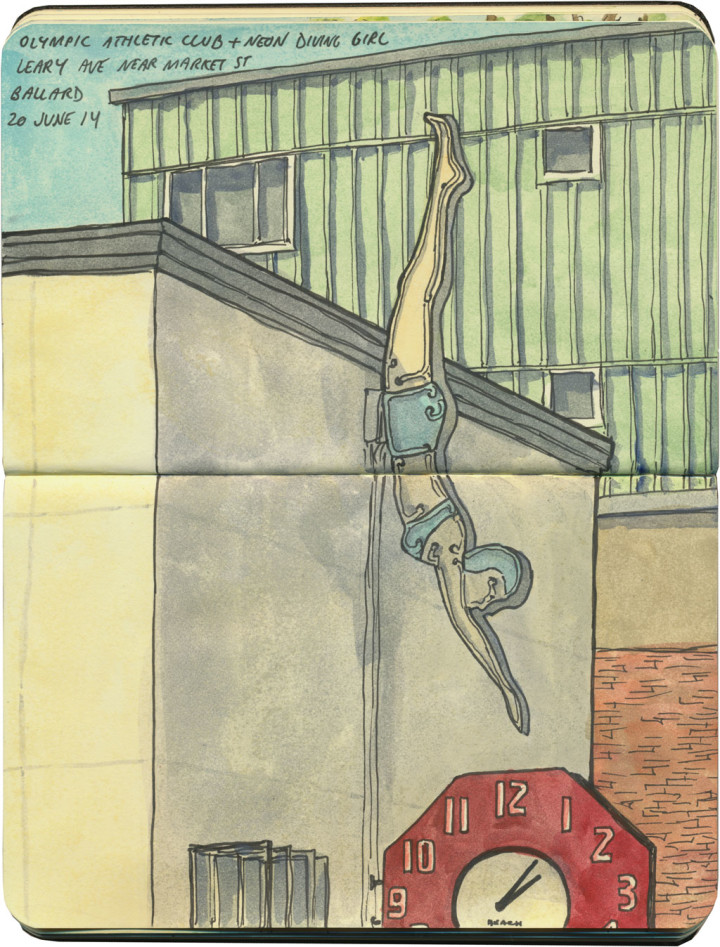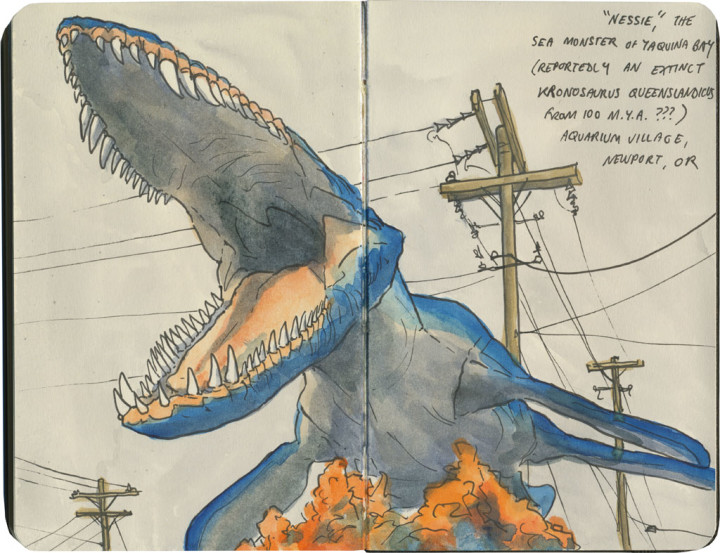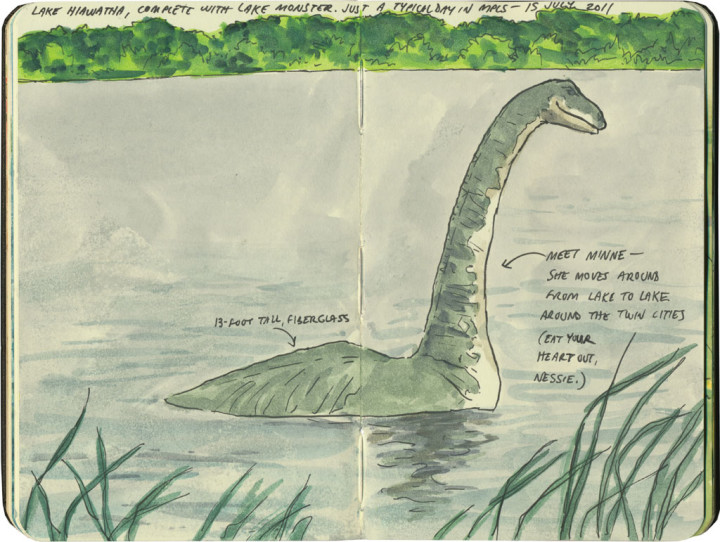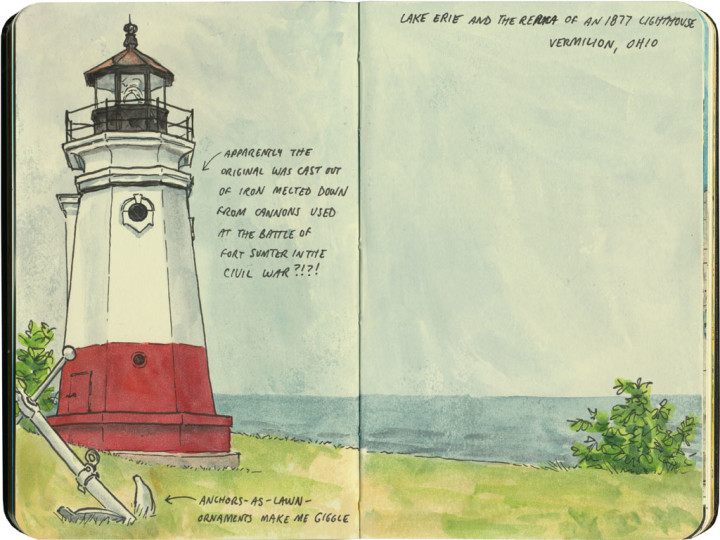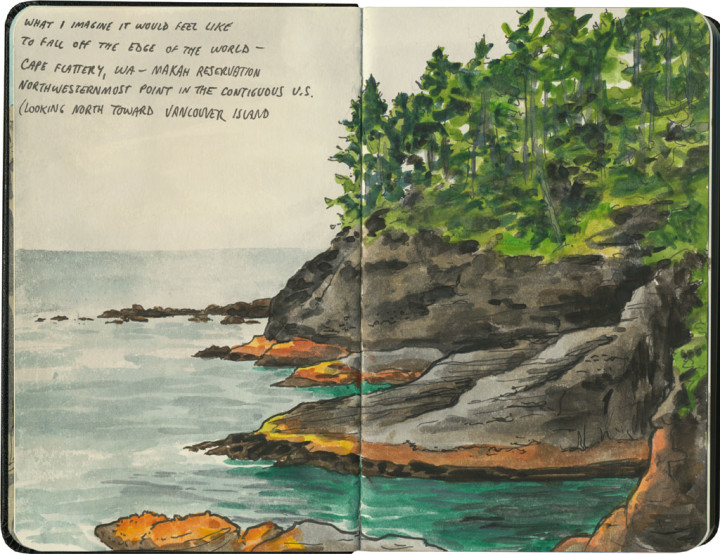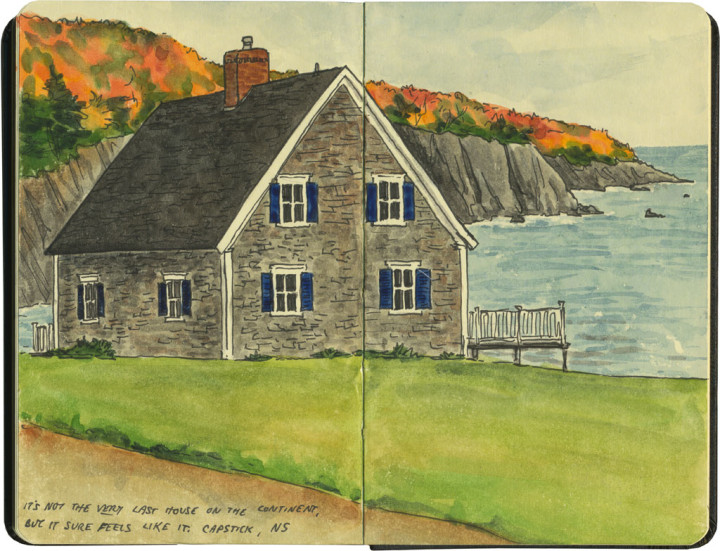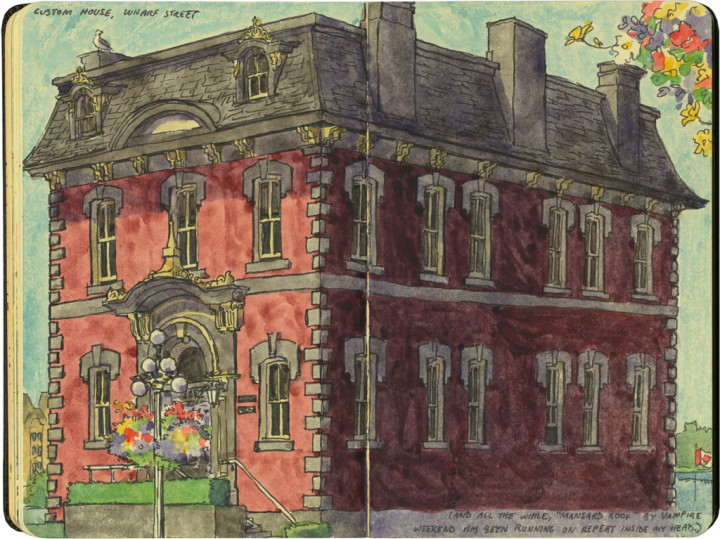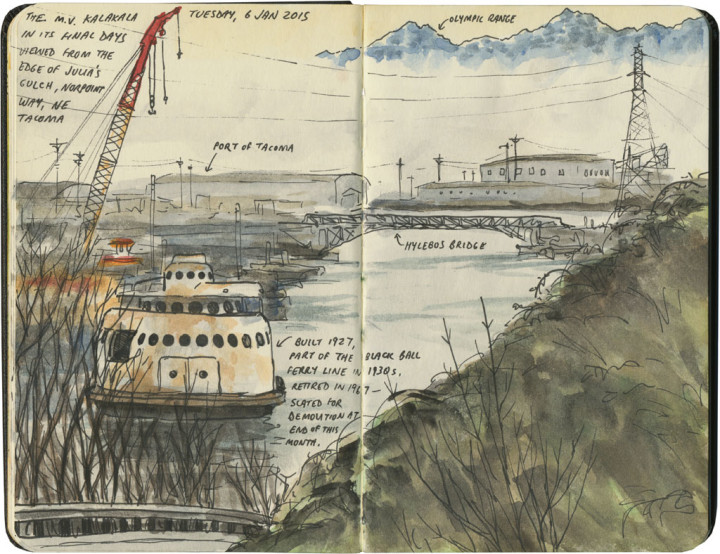
There are restoration success stories like Lucy…and then there are others without the happy ending. In my part of the world right now, a floating rust bucket is the talk of the town. That’s because at long last, an odyssey spanning nearly 90 years, thousands of miles and a whole lot of folly is about to come to an end.
From the 1930s through the 60s, the M.V. Kalakala was a swingin’ Art Deco ferry in Seattle’s Black Ball fleet. Her unusual (and flawed) design made her either a shining star or a laughing stock, depending on whom you asked—but either way, she enjoyed a fair amount of fame. She was the recipient of the first-ever commercial on-board radar system (FCC license #001!), and even made a cameo in the popular “Black Ball Ferry Line” song by Bing Crosby and the Andrews Sisters.
Once she was retired from ferry service, though, she went into a long, slow decline—beached and converted into a cannery in Alaska, then later towed back to Washington as the unfortunate victim of restoration projects that never made it off the ground. I’ll spare you all the twists and turns of the Kalakala story—a quick Google search will give you a whole host of written words, photographs, and even sketches by other folks who can tell the tale better.
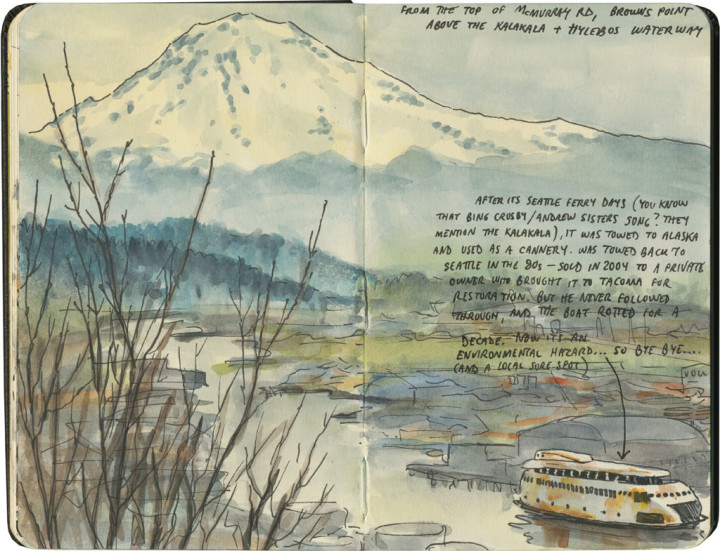
Normally this is just the sort of story that would get me up in arms, ready to send a donation to the save-it fund and spread the word far and wide. But this time, I think I’d prefer to see the Kalakala sail off into the proverbial sunset. She deserves a better end than rusting through and sinking in a swirl of toxic chemicals, in a town that bears no real connection to her history.
Still, I’m glad I’ve had a chance to catch glimpses of her over the years. And I didn’t want to miss the chance to sketch her, even if only from a distance. She’s slated for demolition at the end of this month—I’m glad the weather held out long enough to give me a couple of good views of her.
Wishing you fair winds and following seas, Kalakala.
Save

